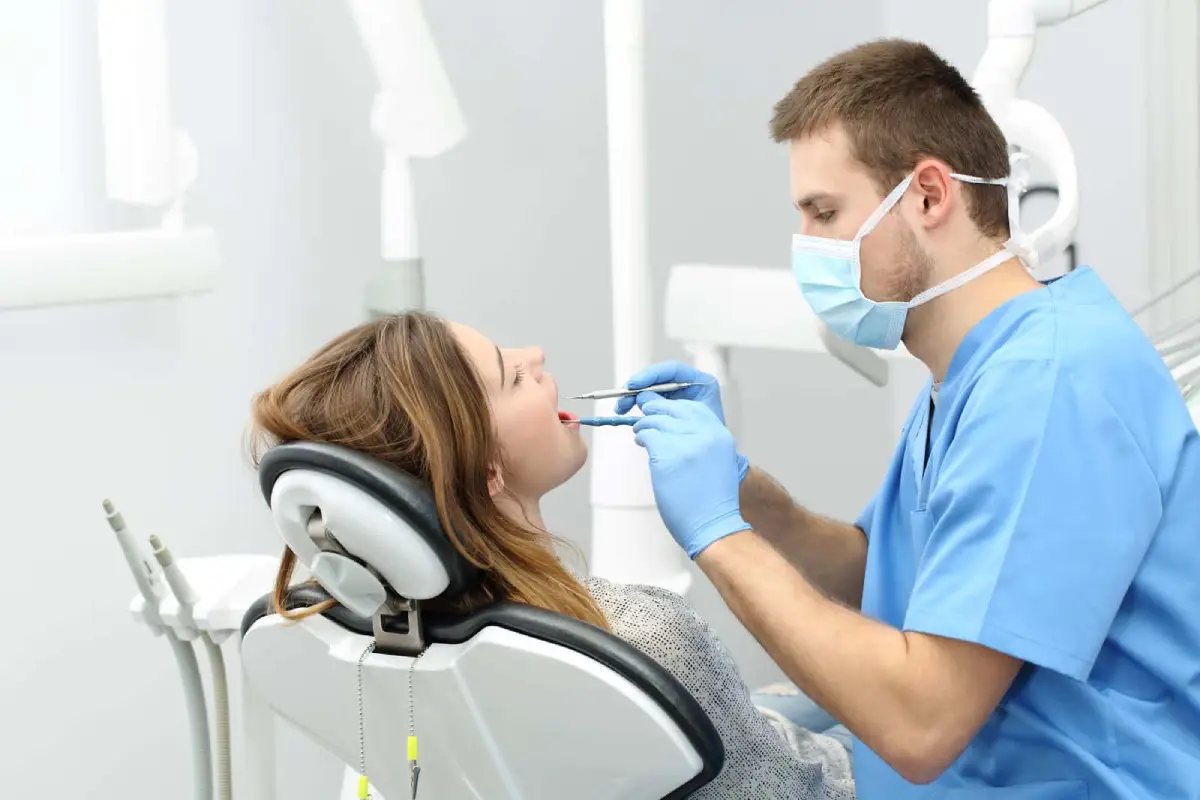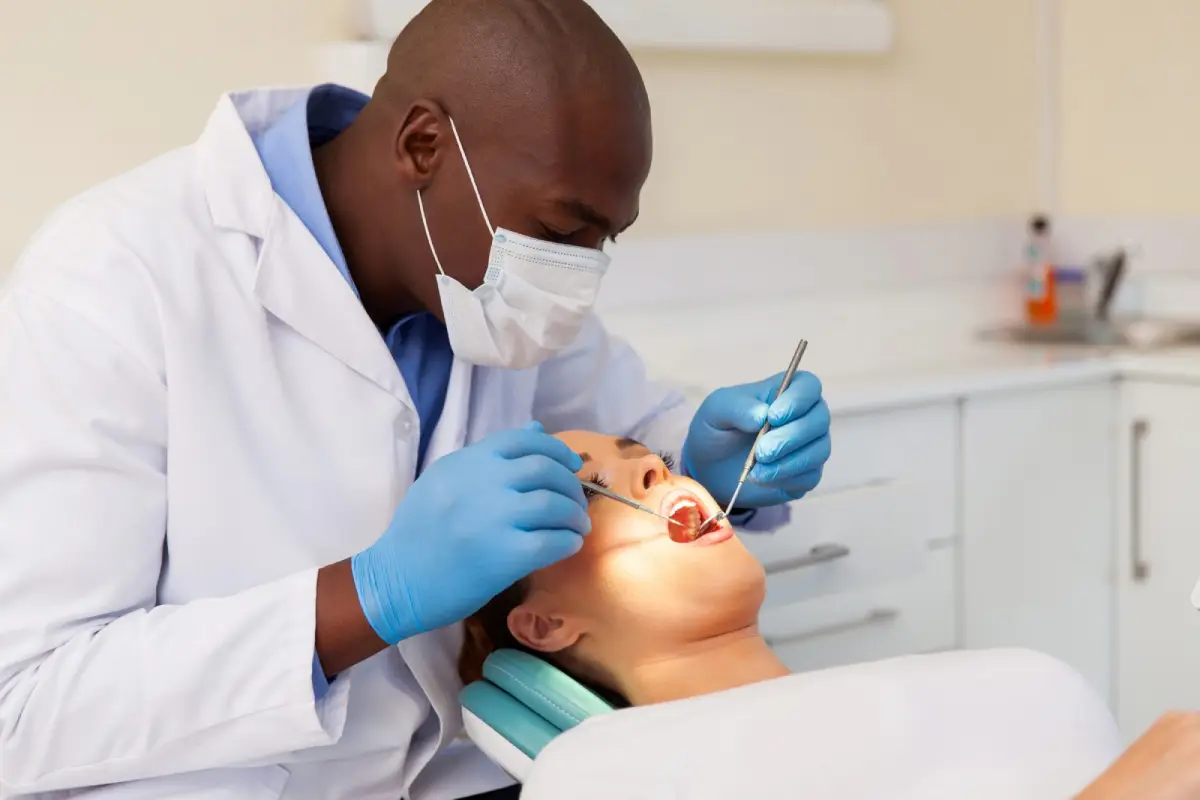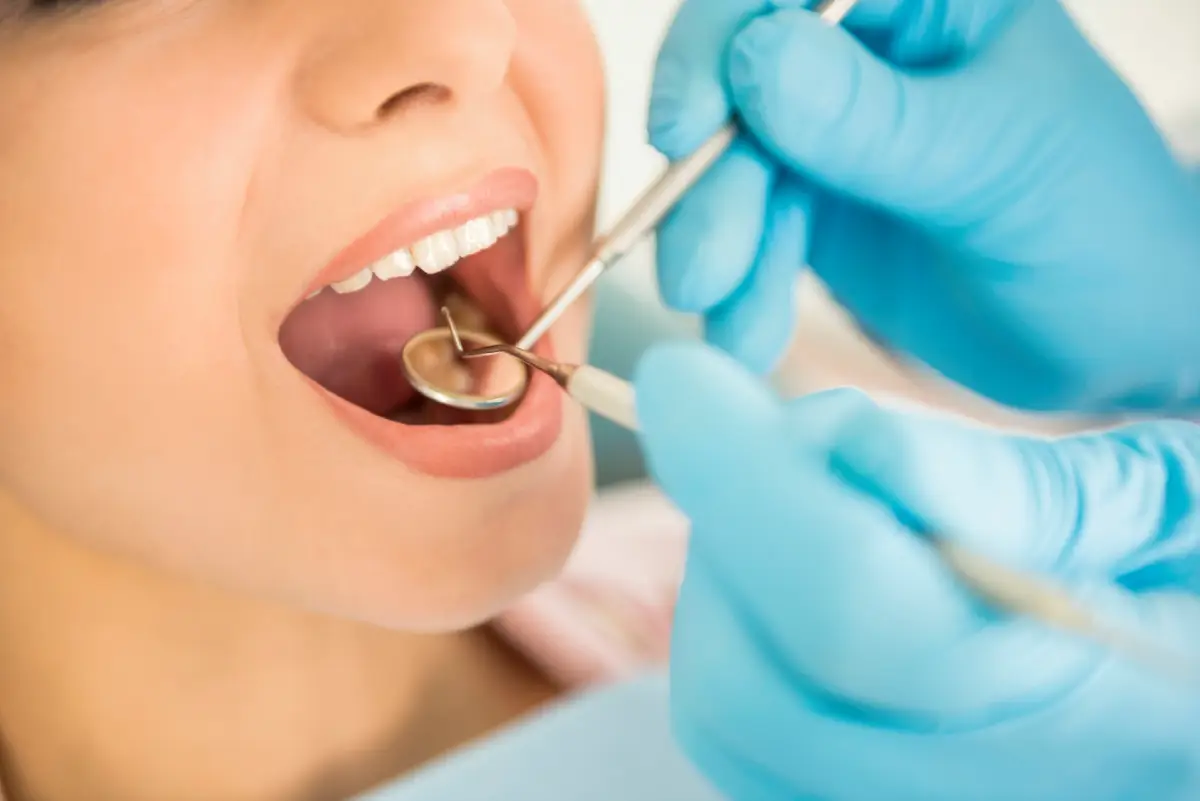Biomimetic Dentistry is the art of decayed and cracked teeth to their natural strength. All principles of biomimetic dentistry are used in the Fortune smiles dental care.
Introduction to Biomimetic Dentistry and Dental Bridges
As we welcome the advancements in dental care, biomimetic dentistry stands out for its revolutionary approach to restoring and maintaining oral health by closely mimicking natural dental structures. This section delves into the principles of biomimetic dentistry, focusing on its application in dental bridges, and sets the stage for a deeper understanding of how this innovative approach can transform patient care.
What is Biomimetic Dentistry?
 Biomimetic dentistry is an advanced field of dental practice that aims to closely replicate the natural properties and functions of the mouth’s tissues. By integrating materials and methods that imitate the biological structures of teeth, biomimetic dentistry strives to achieve restorations that are not only functional and aesthetic but also enduring and harmonious with the body’s natural tendencies.
Biomimetic dentistry is an advanced field of dental practice that aims to closely replicate the natural properties and functions of the mouth’s tissues. By integrating materials and methods that imitate the biological structures of teeth, biomimetic dentistry strives to achieve restorations that are not only functional and aesthetic but also enduring and harmonious with the body’s natural tendencies.
Core Principles of Biomimetic Dentistry:
- Preservation of Tooth Structure: Biomimetic dentistry prioritizes the conservation of the original tooth material, minimizing the need for extensive cuts into the tooth for restorations.
- Stress Reduction: Techniques and materials are chosen based on their ability to distribute stress similarly to natural teeth, preventing the typical failures seen with traditional restorative approaches, such as crown fractures or root fractures.
- Enhanced Longevity and Aesthetics: By focusing on integration rather than mere replacement, biomimetic restorations often result in a more natural look and longer-lasting outcomes.
Read it: The History of Biomimetic Applications in Dentistry
The Role of Dental Bridges in Biomimetic Dentistry
Dental bridges are a common solution for replacing missing teeth, traditionally involving the preparation of adjacent teeth to support the prosthetic tooth. In biomimetic dentistry, the approach to dental bridges is transformed to align with the principles of mimicking natural tooth function and aesthetics.
- Materials: Materials such as advanced ceramics and composite resins are selected for their ability to mimic the translucency, color, and strength of natural teeth.
- Design: The design of biomimetic bridges focuses on integrating the prosthetic seamlessly with the surrounding oral environment, using digital imaging and manufacturing techniques to ensure a precise fit that respects the natural occlusion and alignment of the patient’s bite.
Understanding the use of Dental Bridges in biomimetic dentistry:
- Types and Applications: There are several types of dental bridges, including traditional fixed bridges, cantilever bridges, Maryland bridges, and implant-supported bridges. The choice of bridge type in biomimetic dentistry depends on the location of the missing tooth, the health of adjacent teeth, and the specific needs of the patient’s oral health.
- Biomimetic Innovations: Recent innovations include the use of adhesive bridges that do not require tooth reduction and the use of materials that interact favorably with the biological environment of the mouth, promoting oral health and function.
Conclusion
The integration of biomimetic principles into the design and application of dental bridges represents a significant shift from traditional methods. This approach not only enhances the functional and aesthetic outcomes of dental restorations but also contributes to the overall health and maintenance of the patient’s natural teeth. As we explore further into the specific materials and techniques used in biomimetic dental bridges, it becomes clear that biomimetic dentistry is not just about restoring lost dental structures but about reestablishing a natural harmony within the oral cavity.
Materials and Design in Biomimetic Dentistry

The application of biomimetic dentistry principles to the materials and design of dental bridges significantly enhances their functionality, durability, and integration with natural teeth. This section explores the cutting-edge materials and design techniques used in biomimetic dental bridges, providing insights into how these advancements contribute to more natural and effective dental restorations.
Read it: Biomimetic Materials Transform Dental Restoration
- Advanced Ceramics: The Ceramics are considered to be biomimetic materials in biomimetic dentistry. Ceramics like zirconia and lithium disilicate are favored for their excellent strength, resistance to wear, and outstanding aesthetic qualities. Their color and translucency can be closely matched to the surrounding teeth, making them ideal for visible areas of the mouth.
- Composite Resins: These offer versatility and aesthetic appeal. Recent formulations have improved properties such as compressive strength, wear resistance, and reduced polymerization shrinkage, making them suitable for long-lasting restorations.
- Glass Ionomers: While not as strong as ceramics, glass ionomers release fluoride over time, which can help protect adjacent natural teeth from decay. Their bioactive properties promote the formation of a chemical bond with the tooth structure.
Design Innovations in biomimetic dentistry and Biomimetic Bridges
One of the creative designs in the field of biomimetic dentistry is related to biomimetic bridges. The design of biomimetic dental bridges focuses on replicating the natural function and biomechanics of the teeth they replace. Advanced technology plays a crucial role in achieving these objectives.
- Digital Impressions and CAD/CAM Technology: Digital impressions provide highly accurate measurements of the dental area, allowing for precise modeling of the bridge. CAD/CAM technology enables the custom fabrication of bridge components, ensuring a perfect fit and minimal adjustment during placement.
- Stress Distribution: The design of biomimetic bridges aims to mimic the natural stress distribution of teeth. This is crucial for the longevity of the bridge and the health of surrounding teeth and tissues. Using finite element analysis, engineers and dentists can predict how the bridge will perform under normal chewing forces and adjust the design accordingly.
- Minimal Preparation Techniques: Unlike traditional bridges, biomimetic approaches often require minimal tooth preparation, preserving more of the natural tooth structure. Techniques such as inlays and onlays can be used instead of full crowns, reducing the impact on the natural anatomy of the tooth.
Integration with Dental Implants
For areas with extensive tooth loss, biomimetic dentistry principles are also applied in conjunction with dental implants. Implants provide a stable foundation for biomimetic bridges, facilitating optimal load distribution and mimicking natural tooth roots.
Read it: Biomimetic Approach to Dental Implants
- Material Compatibility: The materials used in biomimetic bridges are compatible with the titanium typically used in dental implants, ensuring a stable and durable integration.
- Design Synergy: The design of the prosthetic components takes into account the osseointegration properties of the implants, ensuring that the entire restoration works harmoniously to replicate natural tooth function.
Conclusion
The advancements in materials and design techniques in biomimetic dental bridges represent a significant leap forward in dental restoration technology. At Fortune Smiles Dental Care, we harness these innovations to provide our patients with restorations that are not only visually indistinguishable from natural teeth but also functionally superior. By continuing to adopt and refine these biomimetic approaches, we offer solutions that are highly personalized and tailored to meet the unique needs of each patient, ensuring optimal results and patient satisfaction.
Benefits of Biomimetic Dental Bridges in biomimetic dentistry

Biomimetic dental bridges offer numerous benefits over traditional dental restoration techniques by focusing on mimicking natural tooth behavior and structure. This approach not only enhances aesthetic outcomes but also promotes long-term oral health. This section details the advantages of using biomimetic dentistry and biomimetic principles in dental bridge design and fabrication, emphasizing the patient-centered outcomes that are critical at Fortune Smiles Dental Care.
Enhanced Aesthetic Appeal in biomimetic dentistry
One of the most immediately noticeable benefits of biomimetic dental bridges is their superior aesthetic quality. The materials and techniques used are chosen for their ability to seamlessly blend with the patient’s natural teeth, providing:
- Color Matching: Advanced ceramics and composite materials used in biomimetic bridges can be precisely color-matched to the surrounding teeth, ensuring that the restoration is virtually indistinguishable from natural teeth.
- Translucency and Luster: The properties of the materials allow for the correct amount of light to pass through the dental bridges, mirroring the natural translucency of tooth enamel. This results in a more natural, lifelike appearance.
Improved Functional Compatibility in biomimetic dentistry
In biomimetic dentistry, the ultimate goal is to preserve the natural function of theeth. biomimetic bridges are designed to replicate the natural function of teeth, which leads to better oral health outcomes and comfort for the patient:
Read it: Innovating Pediatric Dentistry: The Impact of Biomimetic Applications
- Stress Distribution: By mimicking the natural load distribution of teeth, biomimetic bridges minimize stress on the surrounding natural teeth and the jawbone. This helps prevent issues like tooth fracture, wear, or discomfort that often arise with traditional bridges.
- Durability: The advanced materials used are not only aesthetically pleasing but also highly durable. They are resistant to wear and tear from daily activities such as chewing and biting, which extends the life of the bridge.
Preservation of Natural Tooth Structure
Biomimetic dentistry advocates for minimal invasiveness. This principle is particularly beneficial in the context of dental bridges:
- Less Tooth Preparation Required: Traditional bridge preparations often require significant alteration of the adjacent teeth. Biomimetic techniques, such as inlays or onlays instead of full crowns, require less removal of the natural tooth structure, preserving more of the tooth’s original strength and integrity.
- Health of Adjacent Teeth: By reducing the need to alter adjacent teeth, biomimetic bridges help maintain the overall health of the dental arch and prevent complications associated with traditional bridgework.
Promotion of Long-Term Oral Health
Another advantage of using principle of biomimetic dentistry is the improvement of oral and dental health. The integration of biomimetic principles in dental bridges contributes to better long-term oral health:
- Bioactivity: Some biomimetic materials used in dental bridges are bioactive, meaning they can promote remineralization of the adjacent natural teeth, reducing the risk of decay around the bridge.
- Improved Hygiene: The precise fit and natural integration of biomimetic bridges make them easier to clean and maintain, reducing the risk of gum disease and decay, which are common issues with poorly fitting traditional bridges.
Conclusion
At Fortune Smiles Dental Care, we are committed to providing our patients with biomimetic dental bridges that not only restore function and aesthetics but also contribute positively to their overall oral health. The benefits of biomimetic bridges extend beyond simple restoration; they ensure that our patients enjoy a comfortable, long-lasting solution that maintains the health and beauty of their natural smile.
By embracing these advanced technologies and materials, we offer a superior alternative to traditional dental restorations, tailored to meet the specific needs and preferences of each patient.
Read it: Biomimetic Dentistry in California
Case Studies and Future Directions in Biomimetic Bridges
The practical application and ongoing development of biomimetic dentistry like biomimetic dental bridges are key to understanding their impact and potential. This section will explore real-world case studies that highlight the effectiveness of biomimetic bridges and discuss the future trends and innovations that may shape this field. We at Fortune Smiles Dental Care are dedicated to staying at the forefront of these advancements, ensuring our patients benefit from the latest in dental care technology.
Real-World Case Studies
Illustrating the benefits and challenges of biomimetic dental bridges through case studies helps in appreciating their practical impact:
- Case Study 1: A patient presented with a missing first molar and significant wear on adjacent teeth. Using a biomimetic bridge made of advanced ceramics, the restoration not only replaced the missing tooth but also restored the natural occlusion, reducing wear on other teeth without extensive preparation of the adjacent teeth.
- Case Study 2: A young adult patient with a congenitally missing lateral incisor received a biomimetic bridge that utilized minimal prep veneers on adjacent teeth. This approach preserved the majority of the natural tooth structure while providing a functional and aesthetic replacement for the missing incisor.
These case studies demonstrate how biomimetic dentistry principles can be successfully applied to meet diverse patient needs while preserving natural tooth structures and improving oral health outcomes.
Innovations and Future Directions in biomimetic dentistry
The future of biomimetic dentistry looks promising with several innovations on the horizon:
- Material Science Advances: Ongoing research into new biomimetic materials promises to bring even more resilient and natural-looking options. Innovations may include composite materials with improved biomechanical properties and enhanced aesthetic qualities.
- Digital Dentistry Enhancements: The integration of AI and machine learning with CAD/CAM technology will likely streamline the design and manufacturing processes of biomimetic bridges, enhancing their fit and function.
- Regenerative Dentistry Integration: Future developments may include the incorporation of regenerative elements within biomimetic bridges, such as materials that can support the regeneration of dental tissues or promote healing in the surrounding gum tissue.
Conclusion
The case studies of biomimetic dental bridges highlight their potential to significantly improve patient care by providing solutions that are not only aesthetically pleasing but also functionally superior and less invasive. As we look to the future, the possibilities for enhancing these technologies continue to grow. At Fortune Smiles Dental Care, we remain committed to incorporating these advancements into our practice. By adopting the latest in biomimetic technology, we ensure our patients receive the most innovative and effective dental care available. Our goal is to not just restore function and aesthetics but to provide solutions that are integrated seamlessly with each patient’s unique oral health needs, paving the way for a healthier, more confident smile.

